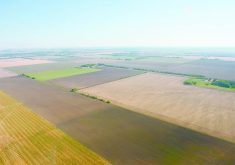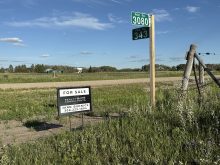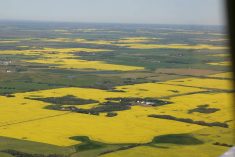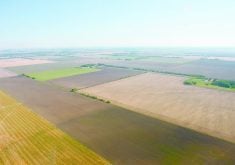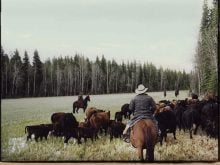WINNIPEG — The amount of rented farmland in Saskatchewan and Alberta shot upward in the 2010s.
Farmland rented or leased in the two provinces went from 25.7 million acres in 2011 to 29.1 million in 2021, says Census of Agriculture data.
So, in a decade, about 3.4 million acres shifted from owned and operated to the “rented” land category. The 3.4 million acres includes cropland and ranchland.
Read Also

India slaps 30 per cent import duty on yellow peas
India has imposed a 30 per cent duty on yellow pea imports with a bill of lading date on or after Nov. 1, 2025.
The data matches what real estate agents and producers have noticed over the last 15 years — less farmland is coming up for sale on the Prairies.
In January 2012, about 850 Saskatchewan farms were listed on the MLS real estate platform, said Tim Hammond, who operates Hammond Realty in Biggar, Sask.
“Over the next 10 years, that (figure) dropped and dropped and dropped.”
As of this August, 265 Saskatchewan farms were listed on the MLS.
The decline in farmland for sale makes sense, considering 2.3 million acres of land didn’t hit the market from 2011 to 2021 in Saskatchewan.
Instead, it became rented land.
Using Census of Agriculture stats for 2011 and 2021:
- In 2011, there were 54.3 million acres of privately held farmland (crops and ranchland) in Saskatchewan.
- Of that, 14.7 million acres were rented, or 27 per cent.
- In 2021, the amount of rented land was nearly 17 million, or about 31 per cent.
In Alberta, the amount of rented land went from 11 million acres in 2011 to 12.1 million in 2021. The percentage of rented land went from 27 to 29 percent.
Looking back at the change in rented land acres during the 2010s is interesting, but investors and landowners want to know what will happen next.
Will this trend persist, where retiring farmers on the Prairies choose to retain their land and rent, instead of selling?
“There’s going to be more and more guys retire in the next five years than we’ve ever seen,” said Kristjan Hebert, who manages Hebert Grain Ventures, a large grain farm and other businesses in Fairlight, Sask.
“My current feeling with everyone I’m dealing with is, (they will) sell half and keep half…. How will that affect the market? That would be an interesting thing to figure out.”
Farmers will keep a portion of their land because they haven’t traditionally invested in the stock market, he added.
“They’re comfortable with land.”
Hebert could be right, but farmers also hold land for emotional reasons, not financial ones. If the farm has been in the family for generations, it’s difficult to let go.
The data from the Census of Agriculture are estimates, not exact numbers. They don’t separate rented cropland from pastureland; instead, it’s lumped together.
It’s possible that more than 31 per cent of crops are grown on rented land in Saskatchewan.
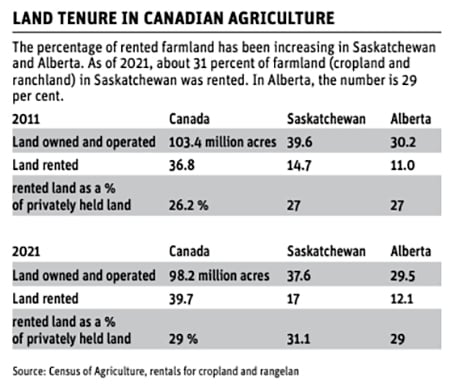
“The larger farms, it’s pretty typical to see 50-50,” Hebert said.
“Fifty percent owned and 50 percent rented…. The smaller the farm, it would be closer to zero.”
The 31 per cent number is small compared to places such as Iowa, where the majority of land is rented, says a 2023 study from Iowa State University.
“Fifty-eight percent of Iowa’s farmland is now leased, a significant increase from the last time the study was conducted in 2017,” said Iowafarmbureau.com.
Iowa’s farmland is also extremely pricey. As of 2024, the average land value was US$11,467 per acre.
Across the United States, about 40 per cent of all farmland is rented, says the U.S. Department of Agriculture.
Saskatchewan and Alberta are still below that level, but if retiring farmers keep holding onto land instead of selling, the percentage of leased farmland could climb to 40 per cent on the Prairies.




